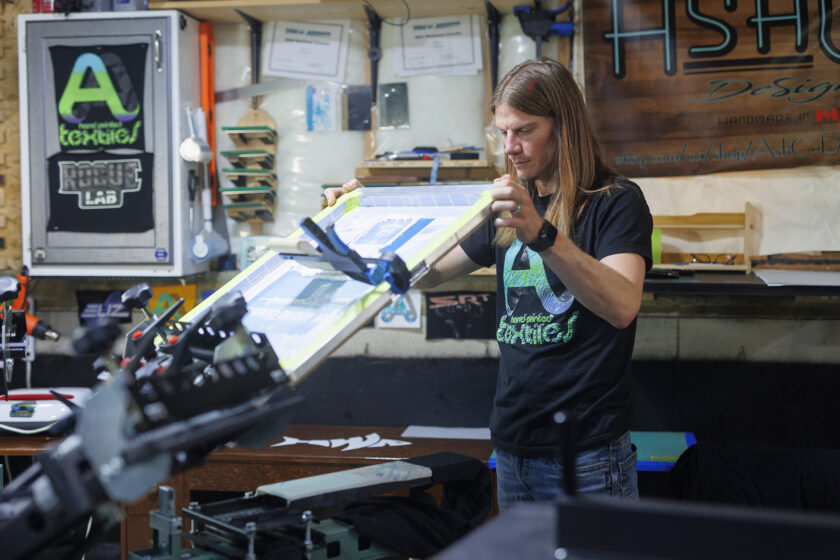
After a back injury forced former mechanic Chris Moulds to retire, he embarked on a career in digital graphic media design and has become an expert in high-density screen printing.
In 2018, he and his wife started AshCo Design, selling vinyl and wood signs featuring inspirational sayings. As the business grew, Moulds purchased a 4-color/2-station manual screen-printing press to mass-produce signs and expand into screen-printed shirts.
“The press never really registered, and it almost defeated me from the start,” Moulds admits. “I used my mechanical background to weld steel piping onto the frame so it wouldn’t flex and bend so much.”
When he could afford an upgrade, Moulds purchased a Vastex V-2000HD 6-color/6-station press from Discovery Lancer, a national screen-printing distributor. Eventually, he bought a Vastex LittleRed X2-30 infrared conveyor dryer. A year later, Moulds started dabbling in specialty printing.
“I was interested in high-density and lifted prints, so I started working with heat-transfer vinyl that was about 600 microns thick,” he says, “but after six months of repeated washings, the vinyl would start cracking so I knew I had to find another way.”
Press Raises Stakes — And Stacks — on High-Density Prints
Moulds prides himself on being a self-taught screen printer and spent the next year learning about high-density printing through social media groups and YouTube videos. After much trial and error, he perfected his technique using the V-2000HD press.
To prep the press for high-density prints, he lowers the printheads by turning the off-contact knobs as far as they will go. Once the screens are registered on press, he finetunes the micro-registration and turns the off-contact knobs to gradually raise the screens as he builds his high-density layers. Some of his highest stacks have consisted of as many as 12 layers — and he still has room to raise his screens higher.
Read this full story on Apparelist, a publication of PRINTING United Alliance, ASI’s strategic partner.



